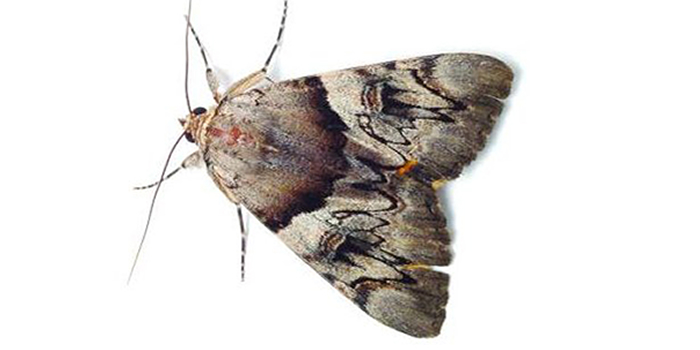
We’re the leading providers of pest control exterminator services for Moth Weevils in Morris NJ
Please give us a call at 201 731 2061 in order to get started with the process.
Moths
Moths are a polyphyletic group of insects that includes all members of the order Lepidoptera that are not butterflies, with moths making up the vast majority of the order. There are thought to be approximately 160,000 species of moth,[1] many of which have yet to be described. Most species of moth are nocturnal, but there are also crepuscular and diurnal species.
While the butterflies form a monophyletic group, the moths, comprising the rest of the Lepidoptera, do not. Many attempts have been made to group the superfamilies of the Lepidoptera into natural groups, most of which fail because one of the two groups is not monophyletic: Microlepidoptera and Macrolepidoptera, Heterocera and Rhopalocera, Jugatae and Frenatae, Monotrysia and Ditrysia.[2]
Although the rules for distinguishing moths from butterflies are not well established, one very good guiding principle is that butterflies have thin antennae and (with the exception of the family Hedylidae) have small balls or clubs at the end of their antennae. Moth antennae are usually feathery with no ball on the end. The divisions are named by this principle: “club-antennae” (Rhopalocera) or “varied-antennae” (Heterocera).
Moths evolved long before butterflies, with fossils having been found that may be 190 million years old. Both types of Lepidoptera are thought to have evolved along with flowering plants, mainly because most modern species feed on flowering plants, both as adults and larvae. One of the earliest species thought to be a moth-ancestor is Archaeolepis mane, whose fossil fragments show scaled wings similar to caddisflies in their veining.[4]
Weevils
Weevils are a type of beetle belonging to the superfamily Curculionoidea. They are usually small, less than 6 mm (0.24 in), and herbivorous. About 97,000 species of weevils are known. They belong to several families, with most of them in the family Curculionidae (the true weevils). Some other beetles, although not closely related, bear the name “weevil”, such as the biscuit weevil (Stegobium paniceum), which belongs to the family Ptinidae.
Many weevils are considered pests because of their ability to damage and kill crops. The grain or wheat weevil (Sitophilus granarius) damages stored grain. The boll weevil (Anthonomus grandis) attacks cotton crops; it lays its eggs inside cotton bolls and the larvae eat their way out. Other weevils are used for biological control of invasive plants.
Some weevils have the ability to fly, such as the rice weevil.[1][2]
One species of weevil, Austroplatypus incompertus, exhibits eusociality, one of the few insects outside the Hymenoptera and the Isoptera to do so.
Morris NJ Exterminators Pest Control Ants Bed Bugs Bedbugs Roaches Rats Mice Termites Pest Control Exterminators, Ants Bedbugs, Cockroaches, Mice, Rats, Fleas, Ticks, Centipede, Millipede, Crickets, Earwigs, Silver Fish, Spiders, Bee, Wasp, Fly, Gnat, Mites, Termites, Beetle, Mosquito, Moth, Weevil, Beattystown, Boonton, Budd Lake, Butler, Chatham, Chester, Dover, Florham Park, Kenvil, Kinnelon, Lake Telemark Lincoln Park, Long Valley, Madison, Mendham, Morris Plains, Morristown, Mount Arlington, Mountain Lakes, Netcong, Riverdale, Rockaway, Succasunna, Victory Gardens, Wharton, White Meadow Lake


Social Profiles